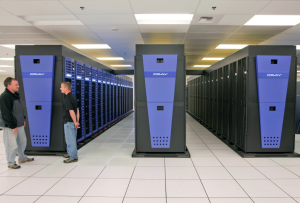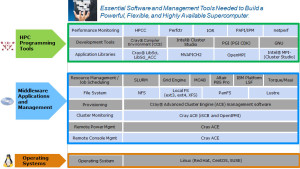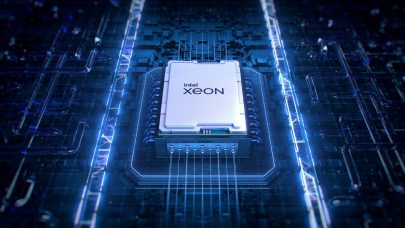Throughout most of the history of supercomputers and the rapid rise of large-scale HPC clusters, hardware has been in the spotlight. But recently software has begun to take center stage.
IDC notes that the increasing commoditization of highly parallel HPC hardware systems has had two contradictory effects – price/performance has greatly improved, but, at the same time, these systems have become increasingly more difficult to use efficiently and economically.
There is a lot at stake. HPC clusters account for about two-thirds of the HPC servers sold today. IDC predicts that by 2016 the market for large-scale clusters in the supercomputer and divisional segments will reach $7.3 billion and the server market for high-performance data analysis (HPDA) will be about $1.3 billion.
 Cray CS300 cluster solutions have positioned the company to take full advantage of the anticipated market growth.
Cray CS300 cluster solutions have positioned the company to take full advantage of the anticipated market growth.
But without the underlying software to produce totally integrated HPC systems, realizing the potential of this expanding market could prove elusive. In particular, a flexible, integrated cluster software stack is absolutely essential to the efficient and economical operation of Cray’s present and future supercomputing cluster systems.
And this is why the Cray CS300 comes equipped with a comprehensive and flexible HPC cluster software stack. The stack includes open source HPC software tools including operating systems, provisioning, remote console/power management, cluster monitoring, parallel file system, scheduling, development tools, and performance monitoring tools. The software stack can be customized to fit a user’s particular needs.
The Cray software stack is compatible with Linux OS distributions such as Red Hat, CentOS and SUSE. It features middleware applications and management such as cluster monitoring, resource management, and file system. It also offers HPC programming tools with multiple open source and commercial compiler suites, including the Cray Compiler Environment (CCE), as well as MPI distributions, and many other HPC software tools.
Fig. 1 – Software components provided as part of the Cray HPC cluster software stack for its Cray CS300 cluster supercomputer product line.
Cray ACE Software, a Comprehensive Cluster Management Solution
Directly addressing the issues of economic and efficient operation, Cray has provided a unique management software suite, the Advanced Cluster Engine (ACE). ACE has many additional features and functions including system level health monitoring and management, power monitoring, and network management.
With ACE, datacenter administrators are able to manage all of the system hardware from a single point. The system resource management software provides a single user interface for scheduling and executing parallel problems across all of the processors in the system. Nodes can be reconfigured in minutes to best support different users running different jobs on various operating systems. ACE extends this flexibility to the cluster administrator by providing both a command-line interface (CLI) and graphical user interface (GUI).
The resource management software is integrated with Cray ACE management software with specific interface using SLURM (Simple Linux Utility for Resource Management) or Grid Engine Enterprise Edition. It is also compatible with other resource management and scheduling software, such as Altair’s Portable Batch System (PBS Pro), IBM Platform’s LSF, Torque/Maui, etc.
Cray CCE and Multiple Compiler Flexibility Options
The Cray cluster software stack also offers multiple compiler flexibility options, including the Cray Compiler Environment (CCE), GNU Compiler Collection, Intel and PGI.
The CCE, a strong and finely tuned compiler used to build compute-intensive applications on Cray’s high-end supercomputer systems, has now been extended for use on the Cray CS300 cluster solutions. This means that CCE provides software developers with one familiar compiling environment that can be used across Cray’s supercomputing solutions. Cray was one of the first companies to use the CCE with OpenACC.
CCE offers LibSci, a library of highly tuned linear algebra solvers that boosts CPU and GPU applications performance and improves the productivity of Fortran, C and C++ programmers.
Key Benefits of the Cray Software Stack
With Cray’s flexible HPC software architecture, data center engineers can design a software stack that is specific to their environment. They can choose from a full range of file systems, resource managers, application libraries, and development tools.
Users can leverage their new cluster faster because the software stack is integrated, pre-packaged, and fully tested. The Advanced Cluster Engine (ACE) gives them full control over complex supercomputing cluster environments.
In short, the HPC cluster software stack for the Cray CS300 system provides the essential, flexible software and management tools required to build a powerful Linux supercomputer cluster environment. It’s another indication that in this new era of advanced high performance computing, there’s no question – software is the key.
For more information on the CS300 Cluster supercomputer and its Cray Cluster software stack, please contact a Cray representative.





























































